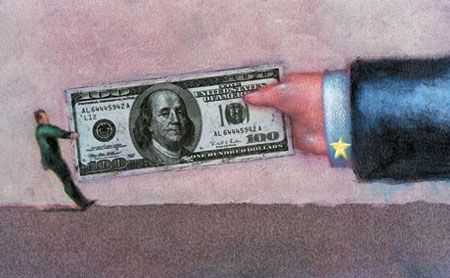Veterinary hospital inventory can cost you in taxes
While politicians wrestles over tax reform in Washington, D.C., Ive got some inventory tips to save you money this year, next year and every year.

Is your veterinary practice paying taxes on inventory that isn't there? (Illustration Getty Images)In my role as CPA and financial advisor to veterinary practice owners, I tell my clients to manage inventory like it's money. Because it is. That means looking at the numbers throughout the year, with extra scrutiny at year-end. For most practices, I've found that inventory on hand should be around $15,000 for each full-time-equivalent veterinarian working in the practice. If your year-end inventory is more, consider the following:
Tip No. 1: Sell, sell, sell and … wait
Have a sale to clear out excess items, then postpone your next order until the new year. If you have an urgent need, order only what's essential this late in the year; that way you know you'll use or sell it immediately.
Tip No. 2: Bring out your dead (inventory!)
Clear out and trash any obsolete inventory-that is, items that will never sell. Be honest. You know what it is.
Tip No. 3: Don't believe everything the report says
A note of caution: When calculating inventory, don't rely solely on the initial inventory report printed from your practice software. Over the years I've seen reports that show over $1 million in inventory-and these were from one- or two-doctor practices! What I've discovered is the persistent problem of inventory items entered but never removed or adjusted after the fact. The moral here is, what goes in must come out.
To make sure your reports are really accurate, enter into your inventory software only those items invoiced in your system. These are typically drugs, therapeutic diets, over-the-counter pharmaceuticals and retail items. Do not enter miscellaneous supplies you don't directly invoice or charge for. Because supplies are continually used and replenished, tracking them is cumbersome, and there really is no benefit. High-turnover supplies should be directly expensed when purchased.
Tip No. 4: Fix the report
If your practice's inventory report is inaccurate, now's the time to work on it. Do a complete physical count of all invoiceable items. Adjust your software to reflect the actual count for each item.
In March, June and September, count 25 percent of your inventory, and in December do a full count to ensure accuracy at year-end. In addition, monitor your inventory report monthly for reasonableness. Inaccuracies are easy to find and fix on an on-going basis.
Follow these simple suggestions and you too can proactively manage inventory throughout the year as well as strategize to minimize inventory and your tax burden at year-end. An additional bonus is you'll make your accountant very happy!
Camala Bailey is a financial advisor, mentor and popular speaker for veterinarians and veterinary professionals. She's based in Tempe, Arizona.